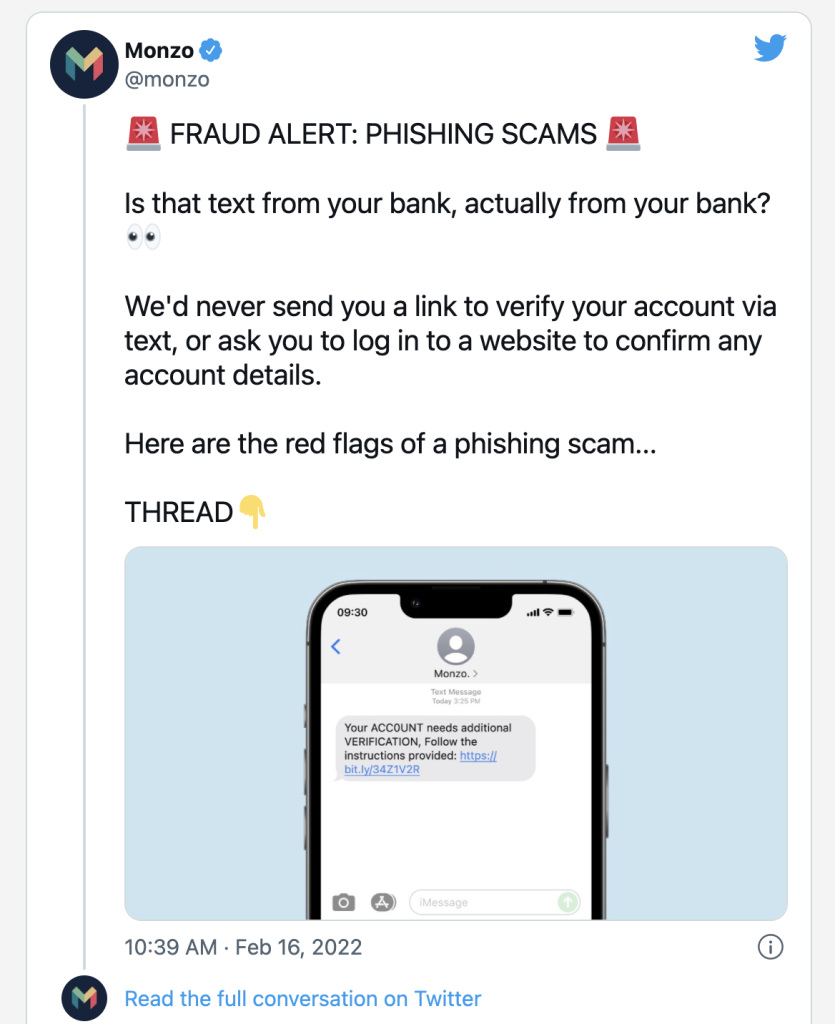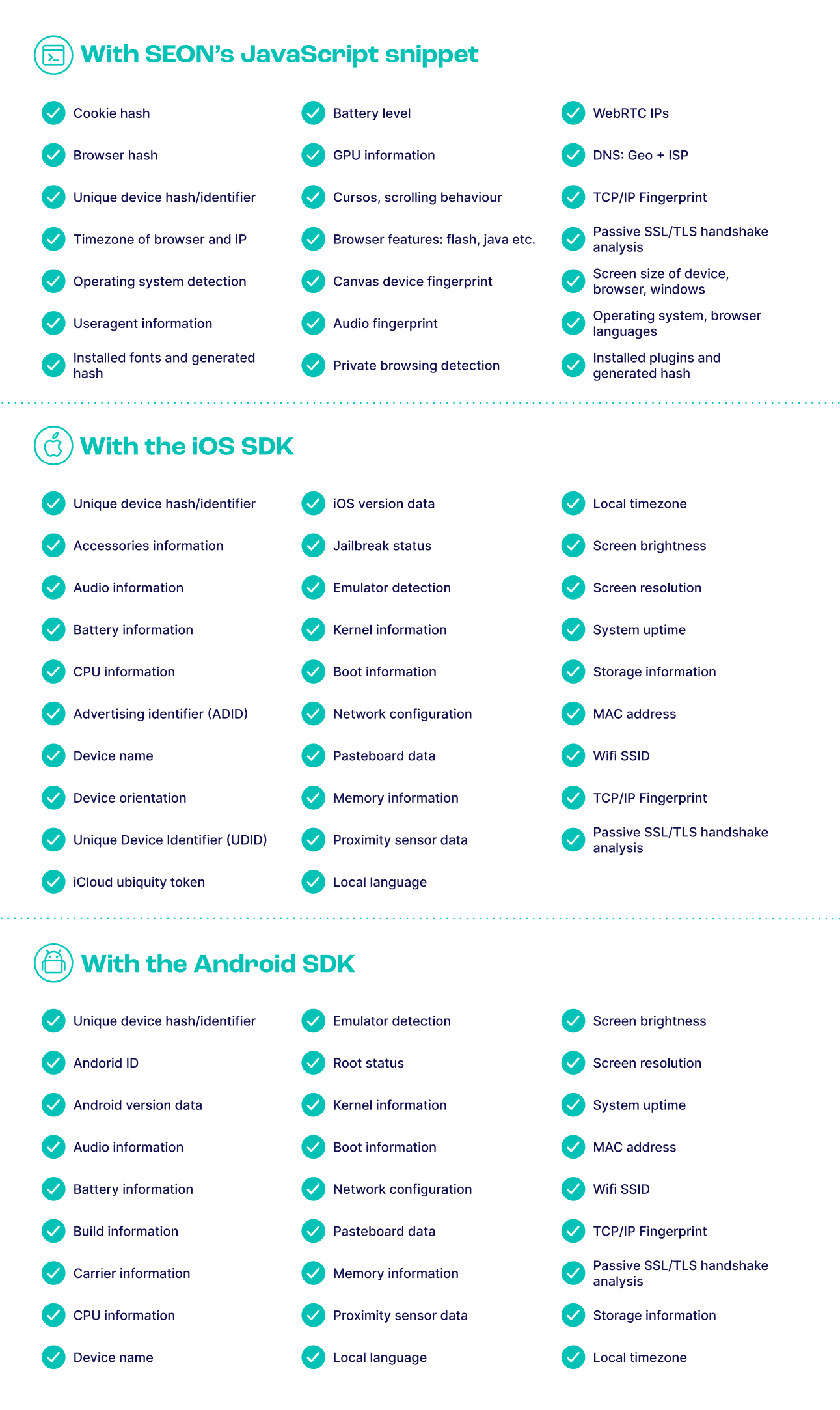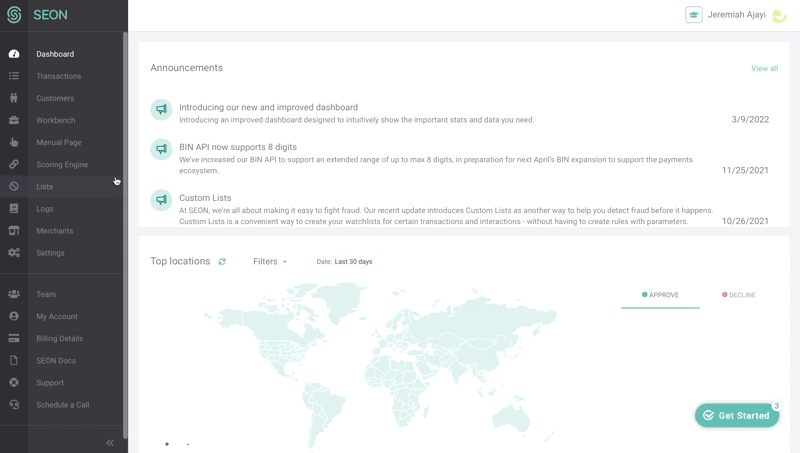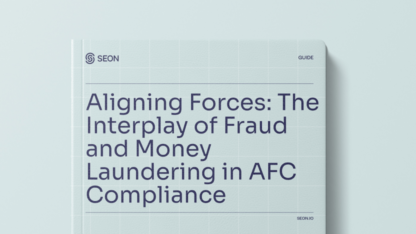As the world turns towards banking experiences that exist increasingly, and exclusively, on devices and computers, fraudsters are finding more digital loopholes to exploit. In 2022, 84% of all financial institutions with a revenue of $1 billion or more were targeted by fraud, and total losses to fraud across all institutions amounted to nearly $1.6 billion, according to LexisNexis.
From neobanks to legacy institutions, every financial organization has a multi-handed balancing act to guardrail their bottom lines. Preventing sophisticated banking fraud, meeting compliance standards, and staying market-competitive by providing a low-friction customer experience are all imperative, but implementing best practices across them also represents a huge cost to each bank.
In this article, we’ll look at effective ways to detect and prevent digital banking fraud without unnecessary friction.
What Is Banking Fraud Detection?
Banking fraud detection is a set of techniques and processes designed to reduce risk. Financial institutions are some of the most targeted companies by fraudsters, due to their immediate access to funds and their ability to transfer them.

As such, banks and fintech institutions invest in robust fraud detection and prevention solutions to protect their assets, systems and customers.
Strictly speaking, fraud detection focuses on identifying fraudsters’ attempts while fraud prevention is all about preventing them, but the two are practically interchangeable in reality, as these strategies go hand in hand.
The Biggest Fraud Challenges for Banks
We could think of banks’ fraud challenges as mainly falling under three categories:
1. Customer Onboarding
Part of adding new customers, digital onboarding is risky for banks, because of regulations such as KYC (know your customer) and AML (anti money laundering). These are legal requirements to confirm user identities and ensure they will not commit financial crimes through customer risk assessment.
Fraudsters use fake or synthetic IDs to fool the process and open bank accounts. Confirming IDs is expensive, with costs rising to $35.2 billion in 2020. It’s also especially difficult for neobanks and challenger banks, who need to acquire new customers fast with as little friction as possible.
2. Credit Card Fraud Prevention
Issuing banks should know when a suspicious transaction or withdrawal takes place as part of effective credit card fraud prevention. Spotting patterns is difficult because they have limited access to data points, only seeing the currency, amount, category, and name of the merchant.
If they try to block fraudulent payments based on these parameters, they may create high rates of false positives, which are frustrating for good cardholders. There are also legal requirements such as Strong Customer Authentication (SCA) and ensuring the source of funds is legitimate.
3. Account Protection
Account takeovers (ATOs) happen when fraudsters acquire the login details of a legitimate user. They use the account as their own, which has terrible consequences for banks’ relationship with customers, and enables several other types of fraud and crime.
This is why banks must do everything they can to protect their users’ accounts.
The wider problem, of course, is that fraud is adaptive. That is to say, fraudsters will quickly notice when their actions are blocked, and try another tactic. Thus, solutions such as AML software and KYC tools have to be versatile as well as efficient.
Typical Digital Banking Fraud Scenarios
Digital banking has shifted consumer finance to mobile and online platforms, increasing fraud risks like account takeovers and phishing. SEON enhances digital bank security with device intelligence, behavioral biometrics, and machine learning for robust fraud detection and compliance support.
Understand key risks in digital banking now.
The Top 5 Threats You Need to Know
5 Ways to Detect & Prevent Fraud in Banking
While fraudsters are getting smarter with their techniques, they can be kept in check by following these recommendations below:

1. Watch for Internal Fraud
Charity, they say, begins at home. And so, if you must fight fraud effectively, start by screening and auditing your company’s employees.
Some of your supposed “trusted” employees might be selling customers’ account details on the dark web. You should take this seriously, as Microsoft research shows that groups like LAPSUS$, a growing team of cybercriminals, are increasingly gaining access to target organizations through recruited employees in return for money.
With research published on Clari5 indicating that 70% of banking fraud is successful because of insiders, it’s more obvious than ever that monitoring internal fraud should be a top priority.
2. Educate Your Customers
Making customers aware of the risks they face, what to look out for, and safe transaction tips is a sure way to reduce fraud risks like ATOs. Even more so, this strategy makes your customers trust your bank more.
For instance, Monzo introduced an online campaign to warn customers about takeover attempts in early 2022. This also helped the UK-based online bank get some positive publicity after some less favorable news coverage a few months earlier.
Here’s the tweet thread they started to educate customers:

One thing to note from Monzo’s campaign is this:
If you make efforts to educate customers, make sure you send out a press release. Popular media could pick up the news, leading to free publicity, more awareness and trust for your digital bank.
3. Monitor Transactions
In certain contexts, transaction monitoring to prevent money laundering and terrorism financing is a requirement, and includes filing suspicious activity reports when something is amiss.
However, keeping an eye on how customers use the website or app of a fintech or traditional institution can go a long way not just to avoid fines and be compliant but to detect and investigate potential cases of fraud.
4. Use Real-Time Data Enrichment Tools
Real-time data enrichment tools enhance KYC data with information from open-source databases, digital services, and social media, providing a fuller picture of users without requiring them to provide extra details. This aids in fraud detection and credit scoring, allowing for risk decisions that maintain a smooth customer experience.
SEON’s Data Enrichment Modules
- Email Analysis Module: This tool checks 90+ social and online sites to verify an email’s legitimacy, showing if it’s linked to blacklists or breaches. Results include an email risk score that flags suspicious users. Batch-checking via API is available for bulk analysis.
- IP Analysis: The IP API identifies user location, checks for spam blacklist associations, and flags suspicious IP types, aiding in ATO prevention and spam detection.
- Device Fingerprinting: Detects unusual device configurations, flags returning devices, and identifies device type (mobile/desktop) and OS to assess risk.

5. Machine Learning
Although fraudsters can attempt to enter fake information during the KYC onboarding process, machine learning algorithms and robust risk scoring can help to catch them.
Statistical analysis is one of the cornerstones of banking fraud detection. Put simply, it’s about gathering as much data as possible and using it to establish patterns related to risk using algorithms. This is often referred to as a blackbox fraud prevention system, and it excels at catching new types of fraud, fast. SEON customers can easily enable blackbox machine learning if they choose to.
However, there is also a whitebox algorithm working behind the scenes, training and re-training itself the longer the platform is being used, and coming up with completely bespoke rule suggestions to mitigate fraud. As it is a whitebox AI solution, it always comes with fully transparent explanations of why and how it works, as well as a confidence score.
These two ML modules work in a complementary fashion, allowing for maximum efficiency as you leverage the benefits of each.
In addition to this, you have control over which risk rules to activate, allowing or blocking specific user actions.
Here’s how:

In all, SEON’s real-time data enrichment solution proves as a cost-effective and frictionless security layer.
You can easily build it into your product via code or plugins with the simple integration flow, maintaining a seamless onboarding process.
You also can delay identity verification checks (IDV checks) until when absolutely necessary, so you only assess users deemed legitimate, or ask customers to fill in extra fields.
Modern fraud detection unifies data, real-time intelligence, transparent AI, and adaptability in one platform for efficient fraud and AML prevention.
List of Best Fraud Detection Software
Banking Fraud Trends in 2024 and Beyond
In 2023 and beyond, there are several banking fraud trends to watch out for and, interestingly, some of As we approach the end of 2024, banking fraud continues to evolve, presenting new challenges and trends that organizations must address.
- Enhanced social engineering: Fraudsters are leveraging advanced technology and collaboration to execute more sophisticated social engineering attacks. Techniques such as spear-phishing and CEO fraud are becoming more prevalent, with criminals utilizing both digital and offline methods to deceive individuals and organizations.
- Fraud-as-a-Service: The dark web has facilitated the emergence of “Fraud-as-a-Service,” where criminals offer their expertise, tools, and even tutorials for hire. This trend lowers the barrier to entry into cybercrime, allowing less skilled individuals to perpetrate fraud using readily available resources.
- Biometric spoofing: While biometric verification methods are widely adopted, they are not foolproof: recent studies have shown that biometric systems can be easily spoofed, raising concerns about their reliability and requiring banks to explore additional layers of security beyond biometrics.
- Synthetic identity fraud: Synthetic identity fraud continues to grow, with criminals combining real and fabricated information to create new identities. This type of fraud is particularly challenging to detect because it often involves legitimate data elements that do not raise immediate red flags in traditional verification systems. As deepfake technology advances, the creation of realistic synthetic identities becomes easier, complicating customer onboarding processes for financial institutions.
Looking ahead to 2025, we can anticipate an increase in automated fraud schemes, particularly credential stuffing attacks, and a rise in account takeover incidents due to improved phishing techniques. The growing adoption of digital payments and cryptocurrencies also presents new vulnerabilities that financial institutions must address.
Frequently Asked Questions:
Bank accounts are generally protected by multiple layers of fraud protection, as banks are typically responsible for assets lost to fraudulent transactions, and so must reimburse customers for any losses they incur as a result of fraud.
On the customer side, banking fraud protection is a matter of staying aware of common scams that lead to bank accounts being compromised, as well as maintaining good password hygiene. Choosing a reputable bank that is FDIC-insured, or insured by other national governments, also generally ensures that any money lost to fraud will be reimbursed.
Banks employ internal fraud investigation teams, generally augmented by digital fraud prevention measures. When an instance of fraud is suspected due to reporting or a suspicious fraud score, they will gather all the data on the potentially fraudulent customer and contact them to get more context on the circumstances of the fraudulent activity. Investigations may also include cooperation with law enforcement, and may sometimes allow the suspected fraudster to continue making transactions to gather more evidence of fraud.
Sources:
- Banking Exchange: Neo and Challenger Bank Market to Reach $395bn by 2026
- Krebs on Security: A Closer Look at the LAPSUS$ Data Extortion Group
- Clari5: The Threat Within. Spotting and Arresting Insider Fraud
- Zion Market Research: Neo and Challenger Bank Market – Global Industry Analysis
- Forbes: PayPal Admits 4.5 Million Accounts Were Illegitimate As Fintech’s Fraud Problem Grows
- Globe Newswire: New Report from Aberdeen Group Reveals Serious Impact of Credential Stuffing and Account Takeover Attacks on the Financial Services Industry
- The Fintech Times: Acuant: How AI and Machine Learning are Fueling Fraud Prevention in an Evolving Digital Economy
- Express: Monzo issues urgent warning to all banking customers and ignoring it could be costly
- Kraken: Your Fingerprint Can Be Hacked For $5. Here’s How.
- https://www.getfocal.ai/blog/top-fraud-trends
https://www.fraud.com/post/top-10-fraud-identity-theft-trends








